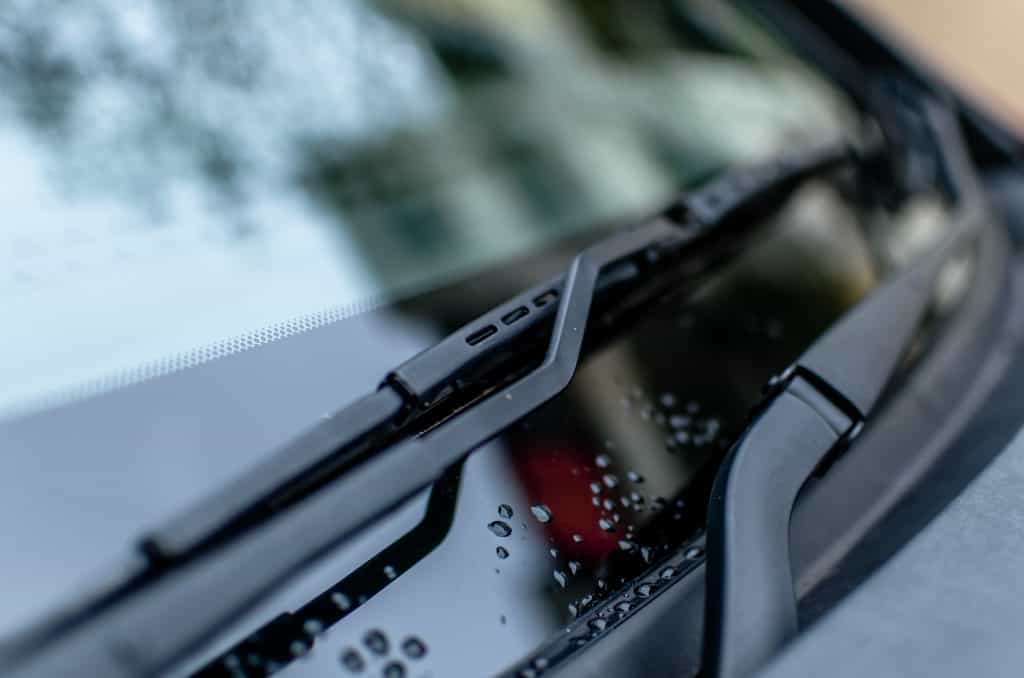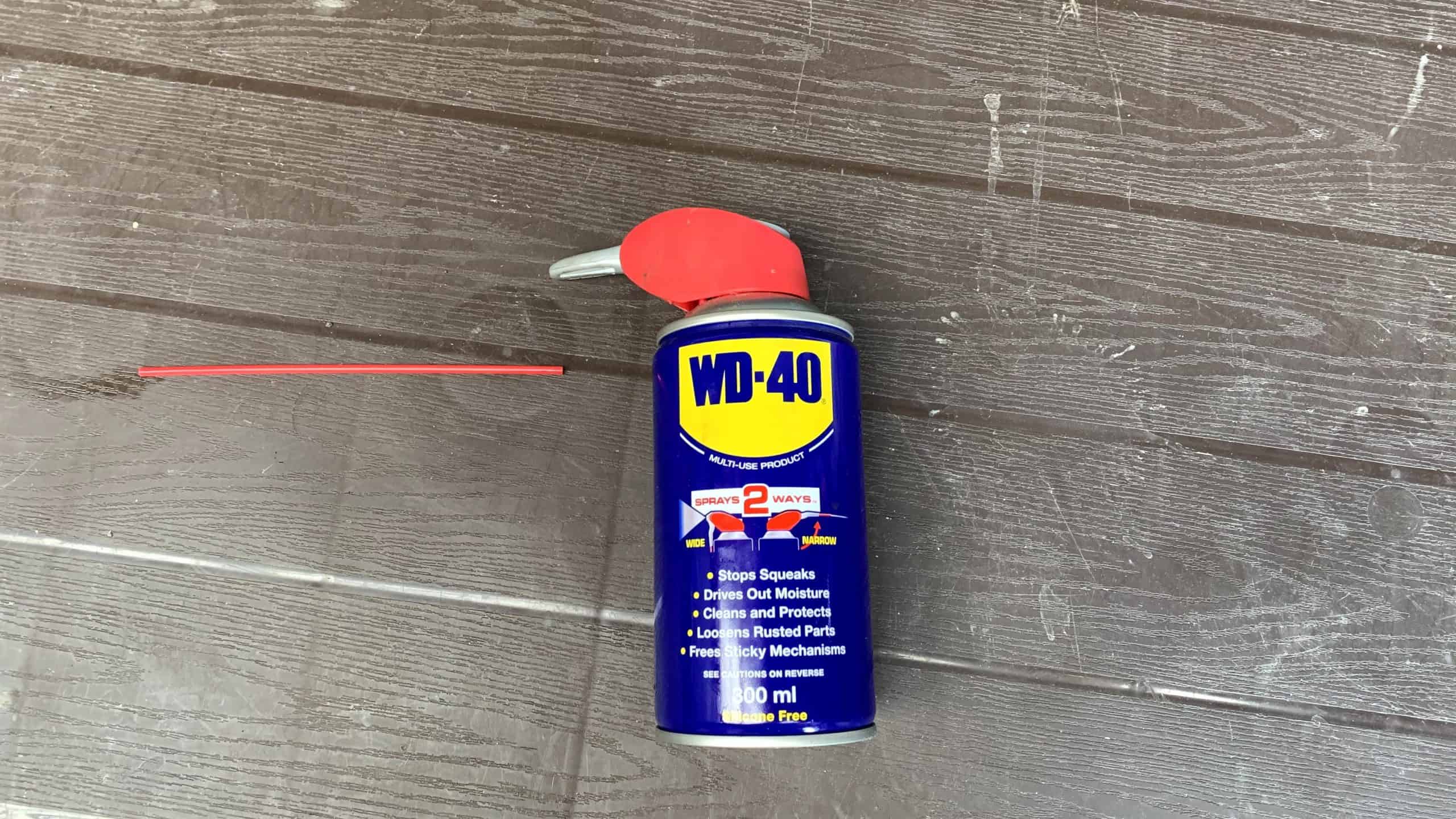WD-40 is a highly versatile spray with many different functions. Originally designed to protect and maintain missile parts, the uses of WD-40 – and their range of products – have greatly expanded.
Can WD-40 spray be used on rubber?
The classic WD-40 spray is designed to be used on metal surfaces. However, there is a variant known as WD-40 Specialist Silicone spray, which can be used on metal, rubber, vinyl, and plastic. From seals to outsoles, the WD-40 Specialist Silicone spray can be used to waterproof, lubricate, and protect a variety of rubber materials.
In this article, we’ll look at the WD-40 Specialist Silicone spray, which can be used on rubber, among other materials. We’ll break down some of the uses for this great product and how you can safely use it.

What is WD-40 Used For?
The ‘WD’ in WD-40 stands for Water Displacement. The product is named after a project completed at the San Diego Rocket Chemical Company. This project was carried out by three technicians in 1953 in order to find a solution that could prevent rust and combat grease.
It’s safe to say these technicians succeeded.
Today, WD-40 is internationally recognized, being used by countless people across the globe. While initially intended to protect missile parts, the uses of this handy maintenance spray have greatly expanded since then.
Today, there are many surprising ways this spray can be used, from preventing flowerpots from sticking together while they’re stacked to getting crayon marks off of various surfaces.
From missile parts to cleaning crayons, all of the uses for this extraordinary spray are still being discovered.
Due to these many uses, WD-40 is a ‘multi-purpose product’ in the truest sense of the phrase. From lubricating to displacing moisture, from protecting against rust to penetrating stuck parts, this handy spray can (almost) do it all!
While there are certainly many uses for WD-40 spray, not every consumer is sure about what materials this handy spray can be used on. For example, there’s a perpetuated rumor that using WD-40 spray on rubber will result in the solution eating away at the rubber.
Keep reading as we take a look at WD-40 and whether or not it can safely be used on rubber!
Is WD-40 Safe to Use on Rubber?
When you browse the official WD-40 online store, you’ll notice that there are quite a few variants of this spray today. From those with smart or flexible straws to those specially formulated to combat heavy-duty grease, you might be overwhelmed by all the different options.
When finding the right WD-40 spray for your needs, it’s important that you get the appropriate WD-40 variant.
If you’re looking to use your WD-40 spray with rubber material, you’ll be glad to know this is possible – so long as you have the correct WD-40 spray.
When you browse the different WD-40 options available on their website, you’ll notice that many of the variants state that they are intended to protect metal surfaces from rust and corrosion.
If you’re looking to use WD-40 on a non-metal surface, that’s entirely possible with the right variant.
The WD-40 Specialist Silicone Lubricant Spray is the perfect choice for those looking to use this dynamic water-displacing spray on non-metal surfaces.
- Not only is WD-40 Specialist Silicone Lubricant safe to use on rubber, but you can even use it on plastic and vinyl.
The silicone lubricant variant of the classic WD-40 spray is perfect for use on cables, hinges, pulleys, valves, locks, and more. Keep reading as we take a look at some of the ways you can use your WD-40 Specialist Silicone spray on rubber!
4 Ways You Can Use WD-40 Specialist Silicone Spray on Rubber
As mentioned earlier, there are plenty of surprising uses for WD-40 spray.
When it comes to using the WD-40 Specialist Silicone spray on rubber, this spray offers many great benefits. Not only does it lubricate rubber, but it can waterproof it and protect it – even in severe temperatures.
Due to these three core benefits of this specialized WD-40 variant, you’ll notice that many of the uses on rubber are closely linked to one another.
By considering a few of the ways this spray can be used on rubber, you’ll likely think of another great use for this nifty product. Let’s take a look!
#1 Protecting Rubber Seals and Weather Stripping
WD-40 Specialist Silicone spray is the perfect spray to use on rubber seals and weather stripping. By using this specialized spray on these rubber components, you’ll effectively prevent the rubber from drying out and eventually cracking due to this.
The waterproofing aspect is also great for any rubber compound that regularly comes into contact with rainwater. That is why this product is a great choice for use on rubber seals in car doors and windows, as well as weatherstripping.
#2 Cleaning Rubber Objects
WD-40 Specialist Silicone spray is a great product that can be used to clean a variety of rubber surfaces. For example, you can use this handy spray to clean a rubber valve when needed. You could even use WD-40 Specialist Silicone to remove gum from the outsole of your shoe.
#3 Extending the Lifespan of Rubber Objects
In fact, this highly useful spray from WD-40 can extend the lifespan of a wide variety of appliances. Whether you spray it onto gaskets or your hosepipe, the WD-40 Specialist Silicone spray’s unique compound will ensure the longevity of rubber. That’s because the solution is formulated to protect rubber compounds from dust and moisture.
#4 Prevent Your Wiper Blades from Freezing
If you’ve ever experienced a harsh winter, you’ll know that the weather can freeze anything – including your vehicle’s wiper blades. By coating your wiper blades with WD-40 Specialist Silicone, you can prevent your wiper blades from freezing during the winter.
How to Apply WD-40 Specialist Silicone
It’s always important to read the instructions on your WD-40 spray can.
The instructions to use the product may differ slightly depending on the variant you have purchased. If you’re planning on using the WD-40 Silicone Specialist spray, this is what you need to know!
If you’re targeting a certain area, you’ll want to use a straw nozzle with your WD-40 Specialist Silicone spray. This will provide a precise stream to a certain area to adequately target it. However, if you’re looking to cover a larger surface area, you can use the spray without the nozzle.
Take a look at this YouTube video to see how the WD-40 “Smart Straw” works.
To use the specialized straw, simply flip it upwards. To use a wide-reaching spray, simply keep the straw lowered in its default position. Before using your WD-40 Specialist Silicone spray, you should always ensure that you shake the can well before use.
Caution should be taken while using this spray.
A mask may be advisable to prevent breathing in the spray, which could cause irritation. If the spray gets in your eyes, you should flush your eyes with water for fifteen minutes.
If it gets on your skin, you should clean it off with soap and water. If any symptoms persist, you should seek medical attention.
Conclusion
In this article, we looked at the use of WD-40 on rubber. When looking to use this handy spray, it’s crucial that you buy the right variant suited to your needs.
In terms of use on rubber items, the WD-40 Specialist Silicone is the right spray for you to waterproof, lubricate, and protect rubber.





